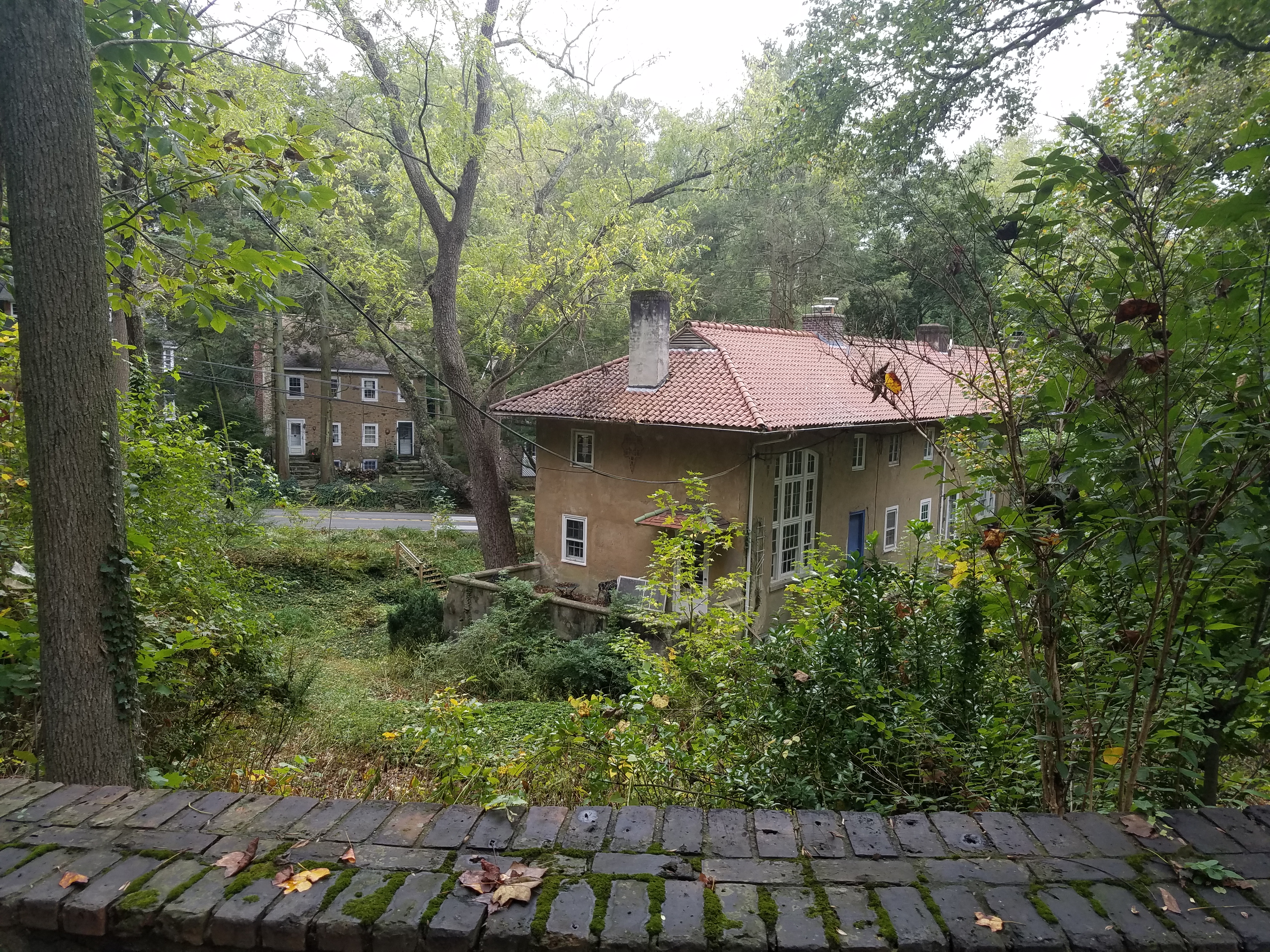Experiencing the Arts and Crafts through Community and Nature
This post is part of a series of blogs completed for EAMC 606: Cities on a Hill: Material Culture in America’s Communal Utopias. This class examined the history and material culture of intentional communities throughout American history using Winterthur’s collections as well as field studies.
I’ve been drawn to the Arts and Crafts movement and its style long before I even knew what it was—entranced by motifs of interwoven flora and fauna, expanses of pastel hued pottery, stunning wooden furniture, and glowing rooms lit from stained glass lamps and windows. As I began my work as a historian of decorative arts and material culture, I became fascinated not just with the objects of this style but with the landscapes created by those involved in the movement. Particularly I was drawn to and how designers like William Morris, Frank Lloyd Wright, and others asked people interacting with their works to immerse themselves in their natural landscapes in order to truly fulfill the promise of their designs.
Apartment living as a graduate student makes these lessons difficult to understand as you are surrounded by thick, white, concrete walls and neighbors you may not know. And while historic home and museum tours offer some insight to true harmony of nature and design in their creation, each experience for the most part is a singular representation of a greater sum. However, this fall my fellow classmates and I were given an opportunity to visit three communities firmly rooted in the Arts and Crafts movement, all not too far from Wilmington, Delaware, as part of the Material Culture of Communal Utopias course with the Winterthur Program in American Material Culture and the University of Delaware. The communities of Arden, Delaware, Rose Valley, Pennsylvania, and Byrdcliffe in Woodstock, New York allowed us as a group to experience how being in a place and studying the people who lived and worked in these communities were able to embody the ideas and principals of the Arts and Crafts movement.
What makes these communities so unique is that unlike individual houses designed by Frank Lloyd Wright or interiors by Gustav Stickley, Arden, Rose Valley, and Byrdcliffe were all thriving communities that to this day maintain many of their original buildings, walking paths, landscapes, and even sometimes ways of life and work that visitors can experience as a whole. Though many of the homes remain private, each community has its own way of teaching visitors about their past and present through walking tours, museums, and community programing.
William Morris one said, “The past is not dead, it is living in us, and will be alive in the future which we are now helping to make.” If one wants to immerse themselves in the past of the Arts and Crafts movement and truly get a feel for how the members envisioned a beautiful and worthy life, they should take the time to visit these communities that still hold onto so many aspects of their original founding. Walk the paths that connected work and life. See how the landscape, the homes, and the art reflect and affect one another. Embrace the communal spirit that guided so many as they created a distinctive and splendid style of art. It will be worth your while and enhance both your appreciation and understanding of objects that came from these landscapes as well as the landscapes and communities themselves.
Rose Valley, Pennsylvania an Arts and Crafts community inspired by William Morris utopian novel, News From Nowhere and founded by architect William Price. The community is linked together by a series of walking paths. Seen here is one of the original buildings Price adjusted and restyled when the community was founded to reflect their beliefs and goal. At one point, this building served as quarters for craftsmen in the community and visitors.
Recently, Rose Valley has opened a museum for the public to gain a greater understanding of the community’s history and its current goals and lifestyles. Pictured here is the original drum from the Community’s founding with the Tudor rose crest of Rose Valley painted in the center.
Pictured here jutting from the mountainside is White Pines, the former home of Byrdcliffe’s founders Ralph and Jane Whitehead. Beyond being a symbol of community itself and one of the most visible buildings in Byrdcliffe, this large rustic looking wooden home was also the center of pottery and textile design in the community.
 Pictured here jutting from the mountainside is White Pines, the former home of Byrdcliffe’s founders Ralph and Jane Whitehead. Beyond being a symbol of community itself and one of the most visible buildings in Byrdcliffe, this large rustic looking wooden home was also the center of pottery and textile design in the community.
Pictured here jutting from the mountainside is White Pines, the former home of Byrdcliffe’s founders Ralph and Jane Whitehead. Beyond being a symbol of community itself and one of the most visible buildings in Byrdcliffe, this large rustic looking wooden home was also the center of pottery and textile design in the community.
By Nora Carleson, University of Delaware, American Civilization PhD candidate




Leave a Reply